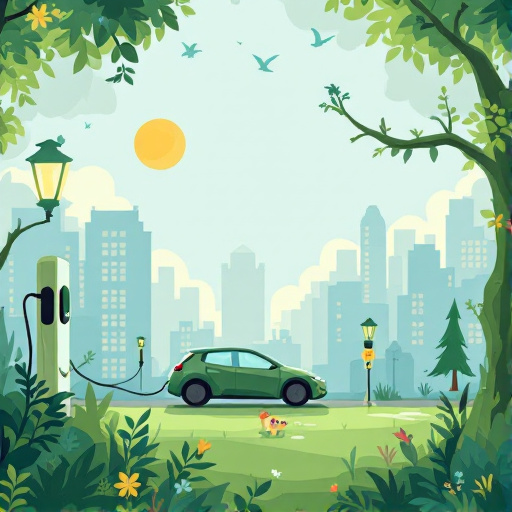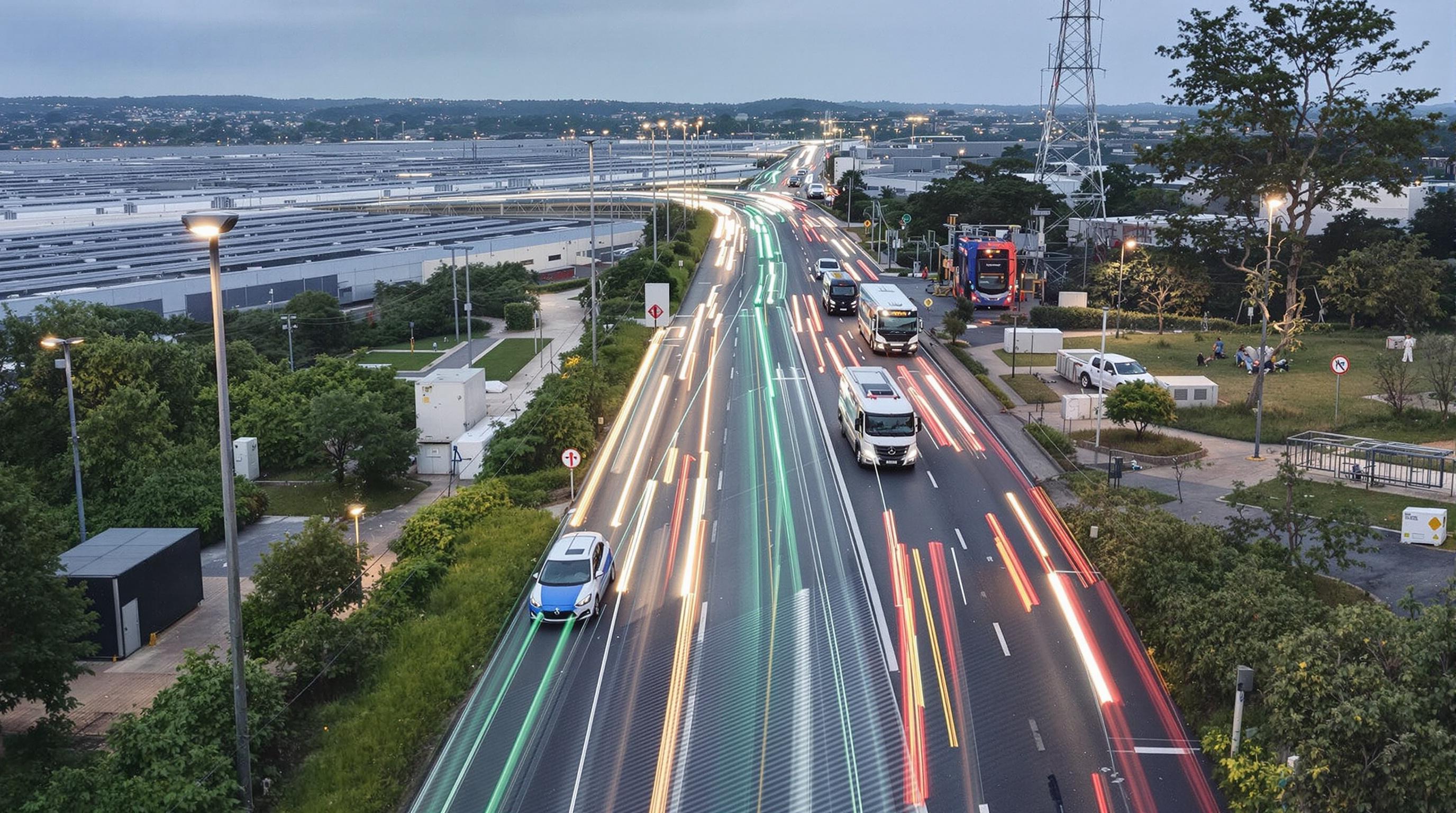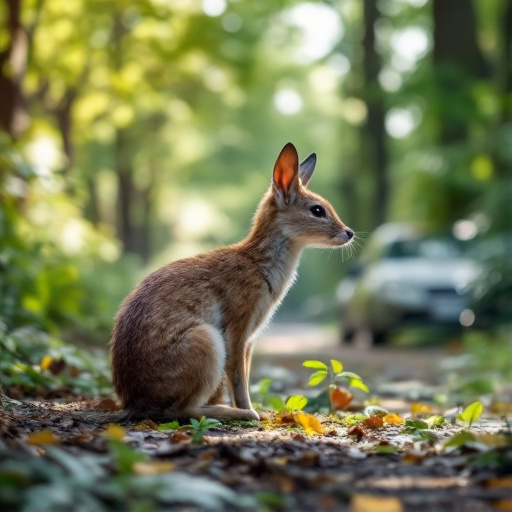Related Articles
- Charged Up! How Electric Vehicles are Reshaping Urban Wildlife Habitats and Biodiversity
- Navigating the Used Car Market: Uncovering the Secrets of 'As-Is' Sales for Savvy Buyers
- The Rise of Electric Car Pop-up Shops: A New Frontier for Urban Retail Experiences
- The Forgotten Art of DIY Car Maintenance: Rediscovering Skills in a Tech-Driven World
- Electric vs. Vintage: The Battle for Enthusiasts' Hearts in the Age of Latest Car Models
- The Rise of the 'Car Review Influencer': How Social Media is Shaping Auto Buying Decisions
Charged Up! How Electric Vehicles are Reshaping Urban Wildlife Habitats and Biodiversity
Charged Up! How Electric Vehicles are Reshaping Urban Wildlife Habitats and Biodiversity
Electric vehicles (EVs) are not just changing how we commute but are also reshaping urban wildlife habitats and biodiversity in remarkable ways. This article delves into the impact of EVs on urban ecosystems, exploring both the challenges and opportunities they present for wildlife.
The Green Revolution on Wheels
At the heart of the electric vehicle revolution is the compelling statistic that transportation accounts for about 29% of total greenhouse gas emissions in the United States, according to the EPA. As cities move towards electrification, a quieter and cleaner form of transport emerges, which can significantly reduce air and noise pollution, impacting wildlife behavior and habitats positively.
How EVs Minimize Noise Pollution
Picture this: a bustling city teeming with honking cars, roaring engines, and the hustle and bustle of daily life. Now, envision that same city with the soft whirl of electric cars gliding silently down the streets. A study published in the Journal of Applied Ecology shows that noise pollution affects animal communication and mating rituals, leading to a decline in certain species. Electric vehicles produce significantly less noise—up to 50% quieter than conventional gasoline engines—allowing wildlife such as birds, insects, and small mammals to thrive in urban settings once deemed inhospitable.
Community Stories: The Bird's Eye View
Consider Jane, a local wildlife enthusiast in Portland, Oregon. She noticed that the once-absent Western Meadowlarks returned to her neighborhood after EVs became popular. “It felt like a small miracle,” Jane shared. “Suddenly, I was out there with my binoculars, spotting these beautiful birds right outside my window.” These anecdotes illustrate a broader trend, where fewer disturbances lead to the resurgence of wildlife in urban environments.
Urban Planning and Biodiversity: A New Approach
As cities across the globe adopt electric vehicles, urban planners are now reevaluating green spaces. The focus is shifting towards integrating these spaces with charging infrastructure, which can reduce habitat fragmentation. An initiative in Amsterdam demonstrates this, where local parks doubled as EV charging stations without compromising green areas, contributing to an increase in urban biodiversity.
The Conservation Connection
This reduction in air pollution creates an ecosystem that is not only conducive to human health but also supports a diverse range of wildlife. According to a report from the World Economic Forum, cities that implement green, sustainable practices could increase urban biodiversity by 20-40% within a decade. Imagine a city where every park, building, and tree is part of a larger conversation about conservation.
Roadblocks and Resilience
While the transition to electric vehicles seems promising, it’s not all smooth sailing. Increased urbanization leads to habitat loss, and there’s no doubt that construction for charging stations can disrupt local ecosystems. Research conducted by the Zoological Society of London indicates that urban sprawl can lead to a decline in species diversity. Still, it is essential to view electrification and urban development as opportunities for incorporating wildlife-friendly designs into city planning.
Case Study: The Sound of Silence
Take the case of an urban area in San Francisco where community leaders implemented designated wildlife corridors amidst the city’s development zones. Residents reported a noticeable increase in native pollinators such as bees and butterflies after electric vehicles became predominant in the area. This scenario showcases resilience and adaptation, emphasizing the potential for cohabitation between humans and wildlife in urban spaces.
Connecting the Dots: Technology Meets Nature
Innovative technologies are emerging that bridge the gap between electric vehicles, urban planning, and wildlife conservation. The use of smart sensors to monitor animal movement can help city authorities make informed decisions about where to place charging stations—ensuring they do not disrupt migratory patterns. For instance, smart cities like Singapore have already begun using such technologies to enhance urban biodiversity.
A Friendlier Environment for All
Moreover, the electric vehicle industry is evolving. Major manufacturers have committed to environmentally friendly practices. According to a report by BloombergNEF, the market for EVs is expected to exceed $7 trillion by 2030, creating a market ripe for sustainable innovations that will result in friendlier habitats for both humans and wildlife.
The Humorous Side of EVs
But let’s not take ourselves too seriously! It’s amusing to think about how nature is responding to the electric vehicle revolution. Imagine a squirrel, once terrorized by the roar of gasoline engines, now releasing a sigh (or whatever noise a squirrel makes) of relief as he crosses the road, safely unaware that it was an EV silently gliding by. And yes, even bunnies are getting in on the act! Now, instead of hopping away in panic, they seem more like relaxin’, chillin’ bunnies, fully aware that the streets are safe for their casual promenades.
Future Friendly: The Role of Education
One of the critical aspects of ensuring the future connections between electric vehicles and wildlife habitats is education. Schools and communities must embrace environmental stewardship and sustainable transportation. Programs targeting youth groups can promote awareness of both EV advantages and the importance of biodiversity. Education can create a generation that is not only tech-savvy but also nature-conscious.
Conclusion: Driving Change Towards a Sustainable Future
As we stand on the cusp of an electrified future, it is essential to recognize the interconnectedness of our actions. The transition to electric vehicles presents unparalleled opportunities to reshape urban environments into sanctuaries for wildlife. By approaching this transformation understandingly—balancing urban development, technology, and ecological preservation—we can pave the way for thriving biodiversity and healthier ecosystems.
In this tall order lies the potential for a remarkable shift, one that champions coexistence between humanity and nature. So, the next time you hop into an electric vehicle, take a moment to reflect: you are not just reducing your carbon footprint; you are part of a larger movement that may very well be changing the game for urban wildlife habitats worldwide. And who knows? You might just find a squirrel or a bunny waving you on from the side of the road!




